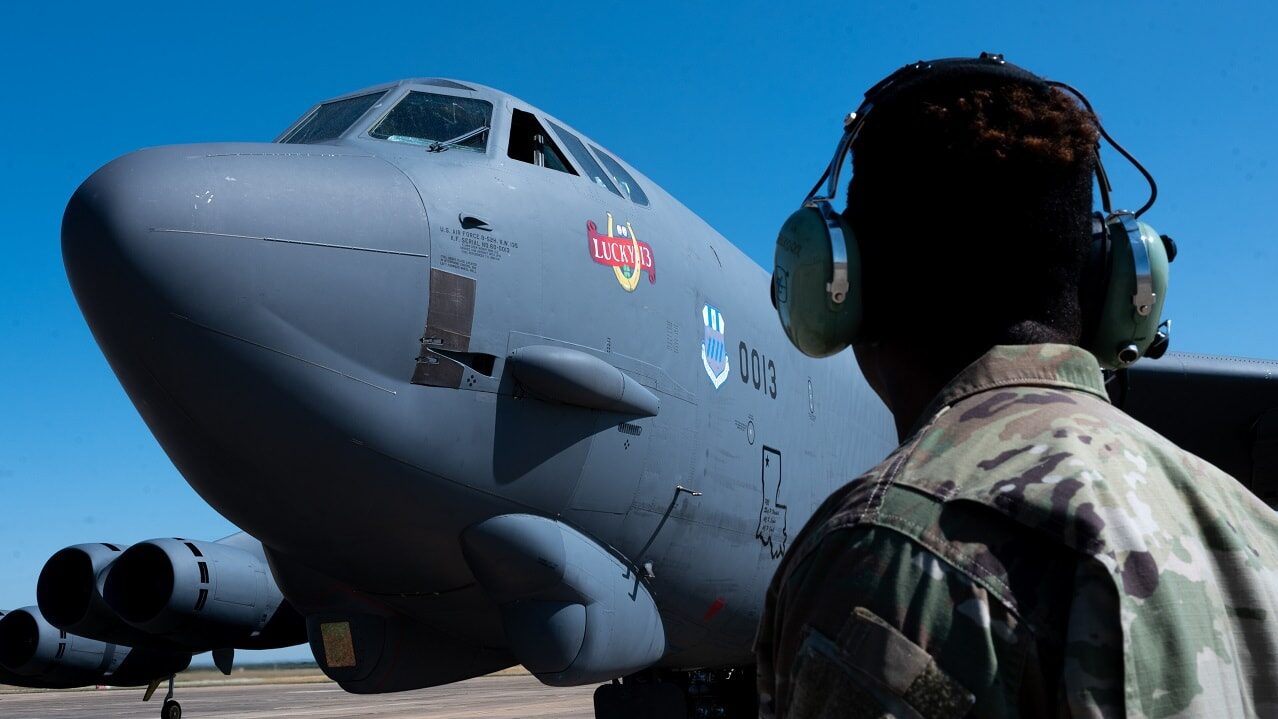In 2020, six United States Air Force’s B-52H Stratofortress heavy bombers took part in the “Allied Sky” exercise, where the bombers successfully overflew all 30 NATO allies on a single day, and were accompanied by around 80 fighters from across the international alliance. In recent years, B-52s have also been regularly deployed to Guam as part of a show of force in response to Chinese People’s Liberation Army Navy (PLAN) aggression in the South China Sea.
In recent weeks, however, the bombers have been in the air, but far less noticeable. In fact, the U.S. Air Force has been rather low-key in its latest B-52 sorties.
That isn’t to say that the bombers have been grounded.
The Pentagon deployed the Cold War-era bombers to Europe in response to Russia’s build-up on the Ukrainian border, and since the Kremlin launched its unprovoked and unwarranted invasion of its neighbor, the B-52s have remained quite active in Europe. However, it has been with a far less “in-your-face” approach from the Biden administration, Insider reported.
The B-52s currently in Europe arrived in February as a part of a “long-planned” deployment that is part of a regularly scheduled U.S. European command U.S. Strategic Command joint mission series.
“With an ever-changing global security environment, it’s critical that our efforts with our allies and partners are unified,” Gen. Jeff Harrigian, USAFE-AFAFRICA commander said in a statement in February. “We’re in Europe training and collaborating together, because consistent integration is how we strengthen our collective airpower.”
Since arriving in Europe, the bombers have flown a high-profile sortie over the North Sea and then to the Middle East to train with NATO allies and other regional partners, and following Russia’s invasion of Ukraine, the B-52s interacted with Polish fighters in the Black Sea region during a Bomber Task Force operation. In March, the bombers flew over Central Europe to provide close-air-support training with troops on the ground. In addition, the Air Force’s B-52s have participated in the ongoing Norwegian-led “Cold Response” NATO training exercise.
New B-52 Hypersonic Weapons Tests
On Tuesday, it was reported that the United States Air Force also successfully tested a hypersonic missile from a B-52H Stratofortress last month, but kept the tests secret to avoid escalating tensions with Russia in advance of President Joe Biden’s trip to Europe to meet with NATO allies.
The Hypersonic Air-breathing Weapon Concept (HAWC) was launched from a B-52 bomber off the west coast. It was the first successful test of the Lockheed Martin version of the system. According to reports, the booster engine accelerated the missile to high speed, followed by the ignition of the scramjet engine, which allowed the missile to reach a hypersonic speed of Mach 5.
The test had come just days after Russia had claimed it had used its own hypersonic missile in combat for the first time, targeting an ammunition warehouse in western Ukraine.
Now a Senior Editor for 1945, Peter Suciu is a Michigan-based writer who has contributed to more than four dozen magazines, newspapers and websites. He regularly writes about military hardware, and is the author of several books on military headgear including A Gallery of Military Headdress, which is available on Amazon.com. Peter is also a Contributing Writer for Forbes.

